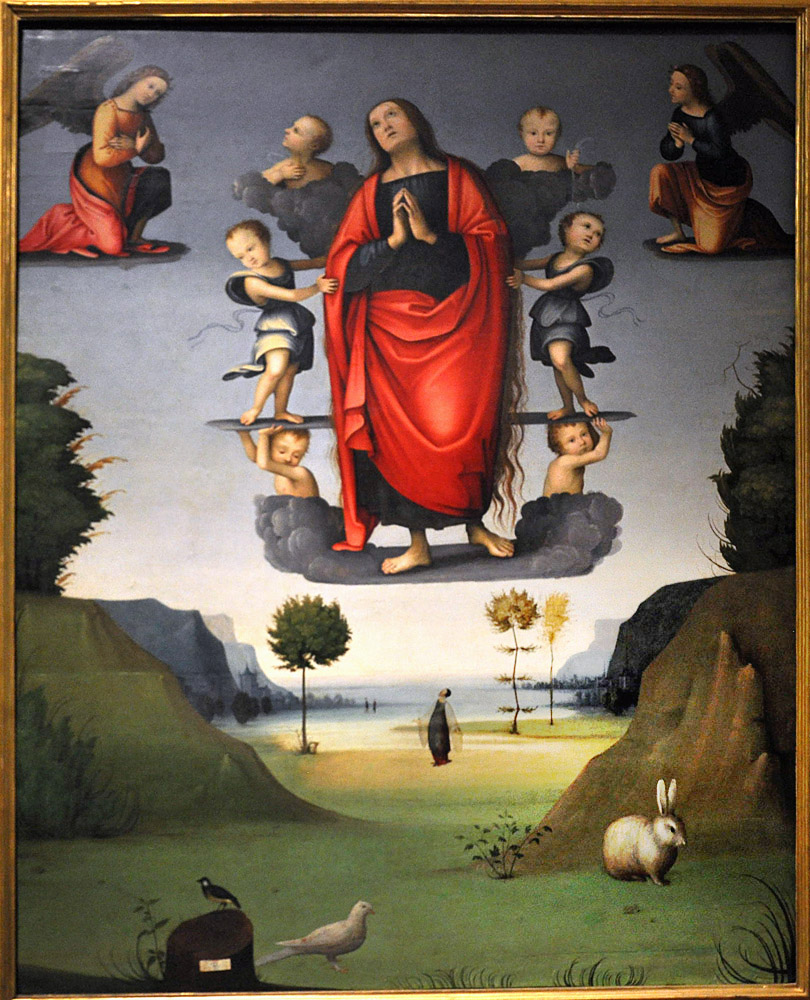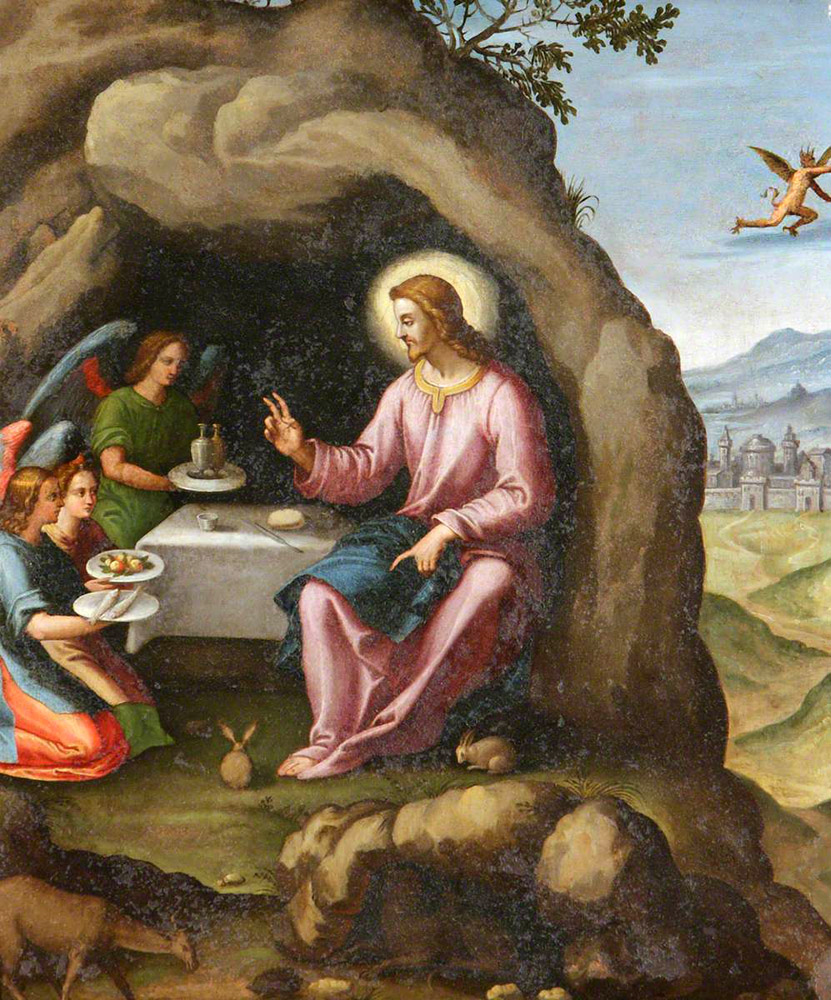One example of this interpretation is in St. Augustine's comment on Psalm 103:18, which in his text read, "the rock is a refuge for hedgehogs and hares." Augustine explains that "the rock was Christ."1
Another example is the interpretation of Proverbs 30:28, which lists four creatures that "are of the least on earth, yet are wiser than the wisest." The second of these wise creatures is the lepusculus, here best understood as the diminutive of lepus, "hare." The lepusculus is called "a weak people" that "makes its lair in the rock." Bede and Jerome say this "weak people" is the Church, which does not trust to her own strength "but has learned to look for safety in the help of her Redeemer."2 This positive sense is seen in the two pictures at right and in a portrait of St. James the Greater in the Boucicaut Hours: a hare sits to the right of the saint, who stands in front of a cave in a mountain.3
With these interpretations in mind, Jerome speaks of Moses as "the Lord's hare" in comments on Exodus 33:22-23.4 Dines (82-84) demonstrates that these associations with Moses and the Church explain the inclusion of the hare in images of Adam naming the animals.
NEGATIVE REPRESENTATIONS
In the 13th century a group of five similar bestiaries included this paragraph:The Hare is called "lepus" as it is "levipes" or light-footed, that is, it runs quickly, and so in Greek it is called "lagos" on account of its speed. It is a swift animal and also timorous. Some affirm that the hare's nature is such that sometimes it is male, and sometimes female. To this animal inconstant people are likened, who being dissolute, as they are neither man nor woman, that is, neither faithful nor treacherous nor cold nor hot, are without doubt those of whom Solomon said: a doubleminded man, unstable in all his ways.5Hares will sometimes appear in this negative sense in medieval art. Their instability seems to be the point of their position and coloring in Giovanni di Paolo's Annunciation so as to echo the figures of Adam and Eve who are being expelled from Paradise. Their timorousness is exhibited in Carpaccio's Visitation, where a hare dashes away from a mere bird.
In the ancient sport of "hare coursing" greyhounds are tested on their ability to run and overtake a hare.6 Hare coursing is pictured in the marginal areas of a variety of medieval images — this "Coronation of the Virgin", this "Vision of St. Eustace", and probably this damaged fresco of the Annunciation. In none of these is the hare headed for any kind of rock, so it is most likely a "negative" symbol of a person who is inconstant or dissolute. But is the greyhound a positive figure chasing the miscreant out of the picture, or is it a devil pursuing the hare to its destruction?
Another negative portrayal is in the Last Judgment tympanum at Conques, where a hare-headed demon is roasting a soul on a spit.
Prepared in 2020 by Richard Stracke, Emeritus Professor of English, Augusta University.
HOME PAGE

In this Assumption of Mary Magdalene the hare standing by the rock represents the Christian who, like Mary Magdalene, sought her salvation in Christ. The hare is especially apposite in this setting, because the Magdalene herself spent her contemplative years in a rock cave. (See the description page.)

A deer, hare, and rabbit approach the cave where angels minister to Jesus after the temptation in the desert. (See the description page.)
NOTES
1 Augustine, Expositions of the Psalms, III, 418. The name of the sheltering creature changes puzzlingly from one ancient translation to another, as ably explained in Dines, 81-82.
2 For Bede see Super Parabolas Salomonis, III, xxx (Migne, Pat. Lat., XCI, 1026). For Jerome, see Glossa Ordinaria, III, 1736.
3 The portrait is a miniature in the Book of Hours of the Marshal of Boucicaut (1410-15). It is reproduced in One Hundred Saints, 19.
4 Jerome, Commentary on Matthew VIII, 1-2.
5 Dines, 75. The remark attributed to Solomon is actually from James 1:8, "A double minded man is inconstant in all his ways."
6 Wikipedia, s.v. "Hare Coursing."